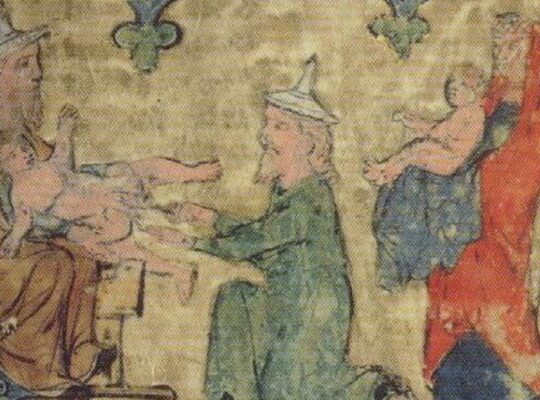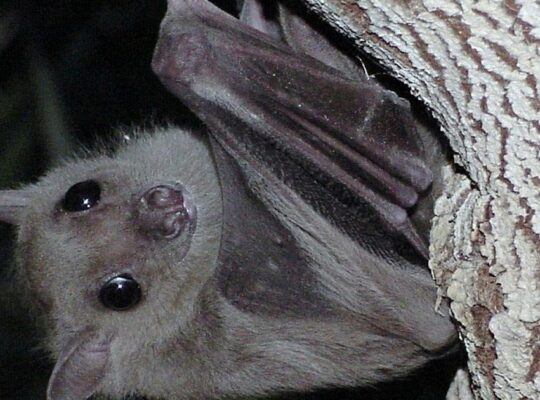A key aspect of parenting is to bring up the kids properly, teaching them foraging and communication skills and life hacks. In big animals from proboscideans to orangutans to humans, childhood lasts years. Elephants may nurse for up to five years, and they tend to stick close to their mothers and the herd for over a decade.
In birds, too, life skills are usually learned from the parents. Except when they aren’t.
Crows and jays are large, they live relatively long lives and they’re smart. Corvid parents also teach the kiddies for a very long time. New Caledonian crows are famous for toolmaking and stay with their parents for up to three years. Just learning how to make a serviceable grub-stick can take a year.
But small, short-lived birds, such as the robin, the sparrow and the European great tit, fledge and leave the nest after just two to three weeks. What can a baby great tit or robin learn in a few weeks , with a baby brain? Not much. Learning has to happen afterwards.
Crows live for seven to eight years in the wild and up to 30 years in captivity. They can afford to invest years in teaching. The robin lives just over one year, and the great tit lasts about three years; they can’t afford such investment.
True, great tits don’t make tools, but they have to survive. The question arises: Do tiny birds with short life spans have a different strategy for learning? How does the great tit learn its tricks?


Now, researchers Sonja Wild, Gustavo Alarcón-Nieto and Lucy Aplin of the Max Planck Institute of Animal Behavior Germany, have revealed the strategy of small birds in the form of the great tit. Their findings from the observation of 51 breeding pairs and their 229 titlings are published in the peer-reviewed PLOS Biology.
Yes, the great tit does have a different strategy! Based on the results of the experiment the team devised, the first chick to hatch learns from its parents. Later chicks learn primarily from older siblings in the same clutch, then from unrelated adult birds and only then their parents, with whom they had relatively limited interaction.
The team is not saying great tits are lousy parents. They’re saying all young have to learn life hacks, and because tits spend such a short time with parents they must have a propensity to learn from others too.
“Until now, most of the research on learning strategies during ontogeny outside ourselves focused on long-lived species we like, such as dolphins, primates or other large mammals. These are animals that typically have few young at a time and invest in them heavily. We chose the great tit as a model system as an example of the other end of the spectrum,” Wild tells Haaretz by email.


Ravens weigh from 500 to 2,000 grams, while the great tit weighs between 14 to 22 grams which is about the same as an AA battery or human eyeball.
First, a caveat. Even if great tits fly after about two and a half weeks, they continue to return to the nest to grift for at least a week and as much as a month. But the bottom line is that from infancy the tit chick is exposed to the vagaries of this cruel world. One of which is its peers – reportedly the great tit is a bully in urban avian circles, hogging the seeds in bird feeders. Not that they like seeds. They prefer caterpillars.
In the experiment, researchers presented the parent tits with a foraging puzzle in which they had to slide a door left or right to get a reward of mealworms. The birds either (1) knew the option, (2) had conflicting knowledge of the two options, or (3) didn’t know how to solve the puzzle. Then the team observed how the babies acquired the knowledge to slide the doors to get treats over a 10-week period.


Wild explains that the baby tits may fly in two to three weeks, but they still return to the nest in the following weeks. In that time, the parents took the chicks to the puzzle boxes to feed them from it. That created opportunities for learning socially from parents. But there the parents were doing the work of opening the worm boxes. The chicks only learned to actually open the boxes themselves weeks later, when no longer associated with their parents. And the first chick taught the most by its parents served as an example for the younger ones. It is worth noting that the members of a clutch hatch within a day of one another.
This explains why the chicks were more likely to solve the puzzle if their parents were skilled.
When starting out, the researchers didn’t even know whether baby birds could learn to solve the puzzle. But the babies did fine. “We were soon amazed to see how eagerly they participated in our experiments. … They went through 33 kilograms of mealworms in just a few weeks,” says Wild.
Well, they have fast metabolisms too. In 2009, National Geographic reported on Hungarian great tits that had developed an appetite for eating hibernating bats.
Asked for the plausible evolutionary logic for learnign courtesy of siblings and strangersthis, Wild thoughtfully answers that the likely mechanism for learning regardless of the pathway is observational. In other words, monkey see, monkey do. This makes sense for a species that lives fast, reproduces fast and produces large numbers of offspring each of which has a relatively low probability of survival into adulthood. This is what the great tit does.
“So they prioritize investing in quantity rather than quality in the hope that one of the many will make it to adulthood and continue the line,” Wild explains. The parents can’t possibly afford to invest in personally teaching all the kids themselves, but hopefully they will pick up the life hacks, which apparently include, in a pinch, how to nail a sleeping bat.











